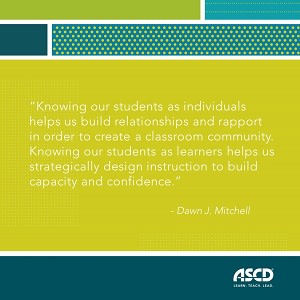As an intermediate instructional coach, I’m often asked, “How do we teach fluency in the older grades?” This is a complex question because reading fluency itself is so dynamic. It ranges from reading a text with appropriate accuracy, pacing, and expression to decoding words and comprehending what the text means. Moreover, how we teach fluency varies as well.
As a former intermediate teacher myself, I have used methods such as partner reading, reader’s theater, and one minute reads to teach and reinforce my students’ fluency skills. However, with all that we do to support fluency skills, I still keep hearing over and over again from teachers that once students move beyond the primary grades they tend to “forget” or “still do not know” how to read fluently. I don’t believe this is the case at all. I argue that the reason why students appear to “not know” how to read fluently is because they do not continue to receive explicit instruction in applying those skills once they leave the primary grades, let alone grades K-5.
Fluency is more than just giving students a one minute read, or sending them off with a partner to practice their fluency. Rather, I have found in my own experience that essential fluency skills still need to be continually taught in grades K-12.
Here are some strategies and techniques I have found instrumental in not only developing my students’ fluency skills, but their overall reading abilities as they have moved beyond the primary grades.
1. Set a purpose. Relate it to your students.
Be clear and honest with your students that the reason why you are working on their fluency is so they can become better readers. Oftentimes I would get a few students who felt this was juvenile and primary work. To create buy-in, I made it relatable to them. I asked them if they felt the texts they were reading now in fourth grade seemed harder to decode and comprehend as compared to second or third grade. The majority of my students would nod their heads, and a few of them even had a look of amazement, as if to say “Wow, how did she know that?” I then explained that it was normal to feel the way that they did about their reading, and that all we were doing was learning a few new strategies to build on the amazing work they had already done.
Whatever spin you put on it, set a purpose with your students that explains why they are doing this work. It will make all the difference.
2. Explicitly teach accuracy, pacing, and expression.
This may seem redundant, but it’s also important. Students need to understand how to apply accuracy, pacing, and expression to relevant and authentic texts they are reading in class. I always began this conversation with a quick review of what each term means, and what they look and do not look like. Then I immediately applied the skills through a guided practice with one or two sentences. While there are many benefits of reading an entire passage aloud to students, for the purposes of fluency instruction I found tackling a sentence or two at a time is best. It allows students to immediately apply these skills without running the risk of them losing track of how the passage is supposed to be read.
3. Teach students how to segment.
Again, this may seem redundant, however, teaching students how to segment their reading is important. All too often I see students in older grades who either speed read, or do not take the appropriate pauses when reading. This matters because it may affect how students comprehend a text. We want students to make meaning of what they are reading; that will not happen if they are not segmenting appropriately.
I approached this by simply teaching students how to identify “W” word phrases in their reading and to segment or “chunk” their reading based on that. Simply put, the “W” words are as follows: who, what, when, where, why, and with the exception of how. I would teach students, that for every “W” word phrase, we want to try to take a small pause. For example, in the sentence, “I went to the store with my mom to buy supplies for the party,” I would teach students to chunk and segment it like this, “I went to the store / with my mom / to buy supplies / for the party //.” Each part of the sentence is segmented according to a different “W” word or words. While segmenting can differ from person to person, the idea is to get students to pay attention to what they are reading, and understand how they say it will impact their comprehension. More importantly the act of segmenting supports students’ comprehension of texts because it forces students to slow down and process what the text is saying. So if students segment differently that is fine, as long as it does not affect their comprehension of the text.
4. Why fluency instruction matters.
“Fluency instruction requires, well, instruction,” (Shanahan, 2017). As I reflect on this fact, I cannot help but think of my first year of teaching. I too was confused about why my students appeared not be fluent readers. As I posed this question to my own literacy coach, my coach explained that it’s not that my students didn’t learn how to read fluently in their previous grades, but, rather, that they needed continued, explicit instruction in how to apply those skills with fourth grade texts and beyond. Then it hit me, as students get older and advance from grade to grade, so do the texts they read. This is why I believe students need to be continually taught fluency in grades K-12. While they learn foundational fluency skills in younger grades, these skills must continue to be reinforced and enhanced as they get older because the texts they encounter naturally become more complex. So it makes sense that fluency must continue to be taught as students get older. When we think about this, it dispels the myth that there is some magic window where students must master essential reading skills by. Rather, I argue that the reason we see older students struggle in reading is because “we are not doing the things that will allow [them] to succeed,” (Shanahan, 2019).
We need to strive to make that window as large as possible. So when it comes to fluency instruction, we must go beyond the typical one minute read, and teach our students that reading is complex and that it takes practice. Help them embrace making mistakes and to be risk takers in their reading. If we do that then I believe we can develop strong, fluent readers at any age.








